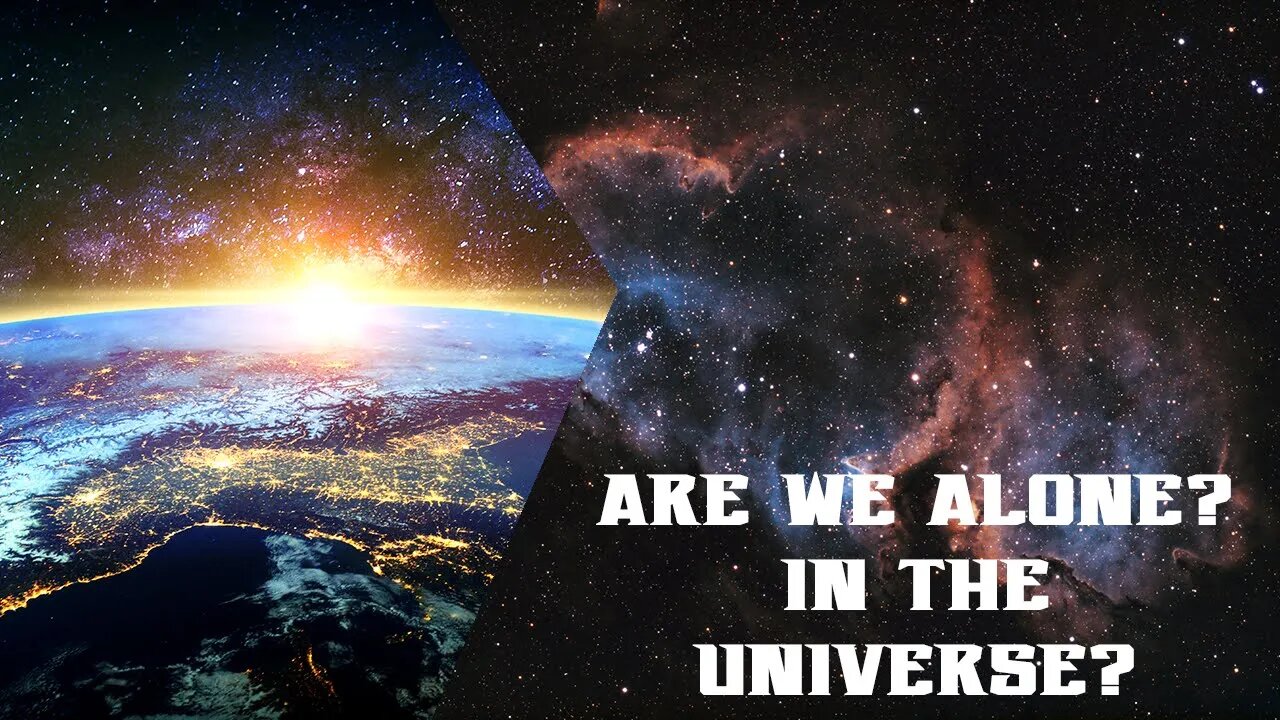Premium Only Content

Why Earth Is The Only Planet In Universe Where Life Exists? Advance Earth Exploration Documentary
Why Earth Is The Only Planet In Universe Where Life Exists?
Earth is the only planet known to support life. Learn about what Earth is made of and where it came from. Earth, our home, is the third planet from the sun. While scientists continue to hunt for clues of life beyond Earth, our home planet remains the only place in the universe where we've ever identified living organisms.
Earth is the fifth-largest planet in the solar system. It's smaller than the four gas giants — Jupiter, Saturn, Uranus, and Neptune — but larger than the three other rocky planets, Mercury, Mars, and Venus.
PLANET EARTH'S ORBIT AROUND THE SUN
Earth has a diameter of roughly 8,000 miles (13,000 kilometers) and is mostly round because gravity generally pulls matter into a ball. But the spin of our home planet causes it to be squashed at its poles and swollen at the equator, making the true shape of the Earth an "oblate spheroid."
Our planet is unique for many reasons, but its available water and oxygen are two defining features. Water covers roughly 71% of Earth's surface, with most of that water located in our planet's oceans. About a fifth of Earth's atmosphere consists of oxygen, produced by plants.
While Earth orbits the sun, the planet is simultaneously spinning around an imaginary line called an axis that runs through the core, from the North Pole to the South Pole. It takes Earth 23.934 hours to complete a rotation on its axis and 365.26 days to complete an orbit around the sun — our days and years on Earth are defined by these gyrations.
Earth's axis of rotation is tilted in relation to the ecliptic plane, an imaginary surface through the planet's orbit around the sun. This means the Northern and Southern hemispheres will sometimes point toward or away from the sun depending on the time of year, and this changes the amount of light the hemispheres receive, resulting in the changing seasons.
Earth happens to orbit the sun within the so-called "Goldilocks zone," where temperatures are just right to maintain liquid water on our planet's surface. Earth's orbit is not a perfect circle, but rather a slightly oval-shaped ellipse, similar to the orbits of all the other planets in our solar system. Our planet is a bit closer to the sun in early January and farther away in July, although this proximity has a much smaller effect on the temperatures we experience on the planet's surface than does the tilt of Earth's axis.
EARTH'S FORMATION AND DEVELOPMENT
Scientists think Earth was formed at roughly the same time as the sun and other planets some 4.6 billion years ago when the solar system coalesced from a giant, rotating cloud of gas and dust known as the solar nebula. As the nebula collapsed under the force of its own gravity, it spun faster and flattened into a disk. Most of the material in that disk was then pulled toward the center to form the sun.
Other particles within the disk collided and stuck together to form ever-larger bodies, including Earth. Scientists think Earth started off as a waterless mass of rock.
"It was thought that because of these asteroids and comets flying around colliding with Earth, conditions on early Earth may have been hellish," Simone Marchi, a planetary scientist at the Southwest Research Institute in Boulder, Colorado, previously told Space.com.
However, analyses of minerals trapped within ancient microscopic crystals suggest that there was liquid water already present on Earth during its first 500 million years, Marchi said.
Radioactive materials in the rock and increasing pressure deep within the Earth generated enough heat to melt the planet's interior, causing some chemicals to rise to the surface and form water, while others became the gases of the atmosphere. Recent evidence suggests that Earth's crust and oceans may have formed within about 200 million years after the planet took shape.
#earth
#ourplanet
#lifeonearth
#livingplanet
#arewealone
#lifeinuniverse
#WhereLifeExists
-
 4:51:59
4:51:59
MyronGainesX
8 hours agoIRS Auctions Off Tekashi 69's Possessions
114K15 -
 LIVE
LIVE
Vigilant News Network
1 day agoRFK Jr. Hearing EXPOSES Corrupt Politicians in Humiliating Scandal | Media Blackout
3,514 watching -
 1:11:40
1:11:40
Josh Pate's College Football Show
7 hours ago $2.95 earnedPerfect CFB Conferences | Big Ohio State Changes | Canceling Spring Games | SEC 2025 Thoughts
39.8K -
 1:08:07
1:08:07
Bek Lover Podcast
5 hours agoInteresting Times with Bek Lover Podcast
18.7K -
 1:51:12
1:51:12
Tate Speech by Andrew Tate
8 hours agoEMERGENCY MEETING EPISODE 105 - UNBURDENED
164K83 -
 1:01:18
1:01:18
Tactical Advisor
11 hours agoBuilding a 308 AR10 Live! | Vault Room Live Stream 016
133K11 -
 2:17:02
2:17:02
Tundra Tactical
1 day ago $26.46 earnedTundra Nation Live : Shawn Of S2 Armament Joins The Boys
243K28 -
 23:22
23:22
MYLUNCHBREAK CHANNEL PAGE
2 days agoUnder The Necropolis - Pt 5
193K67 -
 54:05
54:05
TheGetCanceledPodcast
1 day ago $14.35 earnedThe GCP Ep.11 | Smack White Talks Smack DVD Vs WorldStar, Battle Rap, Universal Hood Pass & More...
189K35 -
 8:30
8:30
Game On!
15 hours ago $0.66 earnedLakers BLOCKBUSTER trade! Luka Doncic is coming to LA!
23.6K4